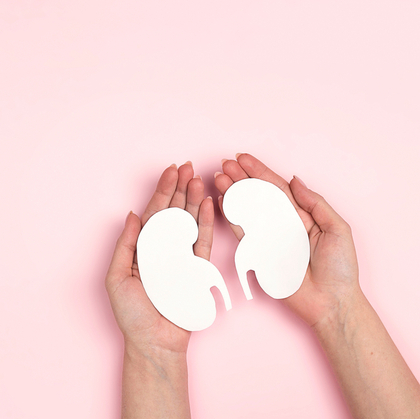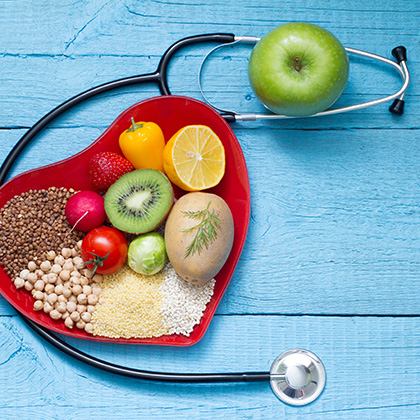
When Dr Addison worked at Guy’s Hospital in London during the 1840s and 1850s, many of his patients were sick with the lung infection tuberculosis (TB). At that time, TB couldn’t be treated very effectively because the medicines we now use to cure bacterial infections – namely antibiotics – hadn’t been discovered. So many of Dr Addison’s patients died as a result. Some, however, developed other symptoms too, which Dr Addison discovered were caused by problems with their adrenal glands. These symptoms are the result of what we now call Addison’s disease.
So what are the symptoms exactly?
According to the NHS (i), the early symptoms of Addison’s disease are similar to some other, more common, health conditions such as the flu or depression. These include symptoms such as:
- Low mood
- Low energy/fatigue
- Muscle weakness
- Unexplained weight loss
- Loss of appetite
- Increased thirst
Unfortunately these early symptoms can be quite vague, with many also caused by other problems. That means many people with early Addison’s disease fail to get a correct diagnosis quickly, especially as Addison’s disease may not be the first thing their doctor suspects (it is quite rare, after all). Then once the condition progresses it can lead to other symptoms such as dizziness, fainting, darkened areas of skin (hyperpigmentation), nausea, vomiting, muscle cramps, abdominal pain, cravings for salty foods and irregular periods (or absence of periods) in women.
If left untreated, Addison’s disease can make your cortisol levels become very low. This can make you very ill very quickly and is known as an Addison’s crisis (sometimes it’s also called an Addisonian crisis or adrenal crisis). Symptoms you may experience if you have an Addison’s crisis include severe vomiting and diarrhoea, low blood pressure, dizziness, rapid breathing, abdominal pain, severe dehydration, headache and severe drowsiness or unconsciousness. An Addison’s crisis can even be fatal if it isn’t diagnosed and treated quickly.
People with diagnosed Addison’s disease who are receiving treatment for their condition can have an Addison’s crisis too. One study suggests every year eight per cent of people with Addison’s disease are admitted to hospital for an Addison’s crisis (ii). Things that can trigger a crisis include having an illness such as an infection and severe physical stress – having an operation, for example (see How is Addison’s disease treated?, below, for more details).
What are the adrenal glands?
Your adrenals are two small glands that sit on top of each of your kidneys. They’re made up of two parts: an outer part called the adrenal cortex and an inner part called the adrenal medulla. Both of these parts make different hormones (or chemicals):
- The adrenal cortex produces cortisol and aldosterone.
- The adrenal medulla makes adrenaline (sometimes called epinephrine) and noradrenaline (norepinephrine).
All of these hormones are needed for various functions in the body. However in Addison’s disease it’s just the adrenal cortex that’s affected, which means the body doesn’t produce enough cortisol and aldosterone:
Cortisol
This hormone is vital for health as it helps regulate blood pressure and the immune system, plus it helps to control blood sugar levels thanks to the way it balances the effect of insulin (the hormone made in the pancreas that allows the body to use glucose for energy). Cortisol is also needed to help the body respond to stress.
Cortisol production is stimulated by another hormone called adrenocorticotrophic hormone (ACTH), which is made by the pituitary gland (a gland found just under the brain).
Aldosterone
This also helps to control blood pressure as well as the level of salts in the bloodstream.
Addison’s disease is classed as primary adrenal insufficiency. This affects around one per 20,000 people in western Europe and the USA. It affects more women than men, and while it’s most commonly first detected in people aged between 30 and 50, it can affect anyone of any age (ii).
Secondary adrenal insufficiency, however, is more common, affecting up to 280 per million people (again more women are affected than men but this time the most common age that problems start is from 50 to 60 years) (iii). In secondary adrenal deficiency – or secondary hypoadrenalism – levels of ACTH are low, which causes low cortisol levels. This causes symptoms similar to those in Addison’s disease.
Addison’s disease and autoimmunity
Years ago, before we had modern medicine to treat infections, TB was the most common cause of Addison’s disease. In some people with TB, the infection in the lungs spread to and destroyed part of the adrenal glands. Thankfully TB isn’t common in many countries now, but in parts of the world where it’s still prevalent it remains the most common cause of Addison’s disease.
Elsewhere, however, the majority of Addison’s disease cases – eight out of 10 in Western Europe (iv) – are thought to be caused by autoimmune disease. Autoimmunity is when there’s a problem with your immune system. Normally your immune system makes antibodies to fend off invading organisms that are harmful, such as bacteria, viruses, fungi and other pathogens (disease-causing organisms). But some people’s immune systems attack normal, healthy cells and tissues – these people are said to have an autoimmune disorder.
Read more about autoimmunity in What are autoimmune conditions?
In Addison’s disease caused by autoimmunity, the immune system makes antibodies that attach to and destroy cells in the adrenal cortex – cells that normally make cortisol and aldosterone. Once these cells start making lower levels of cortisol and aldosterone, the result is the symptoms of Addison’s disease.
If you have Addison’s disease caused by autoimmunity, you also have a higher-than-average chance of developing other autoimmune conditions, with experts suggesting that up to 50 per cent of people with Addison’s disease will go on to develop an associated autoimmune condition (iii) such as:
- Thyroid problems
- Vitiligo
- Type 1 diabetes
- Pernicious anaemia
- Premature ovarian failure
Meanwhile, if you have a close family member with an autoimmune condition, your risk of developing Addison’s disease is higher than average, which suggests genetics may somehow be involved too.
People with Addison’s disease can also have a higher risk of developing the bone-thinning condition osteoporosis (v). Osteoporosis typically (but not exclusively) affects older people, in particular post-menopausal women. However bone thinning has been found in younger people with Addison’s disease, not just younger women but younger men too (v).
Find out more about osteoporosis and what you can do to guard against it in our guide to osteoporosis symptoms.
Weight gain is also a concern for some people with Addison’s disease. But according to the Addison’s Disease Self-Help Group, this may be because the disease often causes weight loss before it’s diagnosed, and some may gain weight quickly once they start taking their Addison’s disease medication (v).
What else causes Addison’s disease?
Autoimmunity is by far the biggest cause in the UK and other western countries. But there are some other less common causes, including:
-
Infections that can affect the adrenal glands, such as the bacterial infections meningococcus and pneumococcus, and the viral infection HIV
-
Cancer in another part of the body that spread to the adrenals
-
Adrenalectomy (surgical removal of both adrenal glands)
-
Damage to the adrenal glands (during surgery or injury, for example)
-
Some rare hereditary conditions including adrenoleukodystropy (ALD), which affects the adrenal glands
-
Amyloidosis (a condition where proteins produced by bone marrow cells damage the adrenals)
-
Heavy bleeding (haemorrhage) into the adrenals (this can sometimes happen if you have meningitis or another type of severe sepsis)
-
Some medicines used to treat Cushing’s syndrome, which causes very high cortisol levels (other medicines that may have an effect on the production of adrenal hormones include certain anti-fungal medicines and a medicine used to treat epilepsy)
Addison's disease treatment
When Dr Addison first described what we now know as Addison’s disease, there was no treatment for the condition. In time, scientists discovered more about the adrenal glands and the hormones they produce, and by the beginning of the 20th century experts managed to make adrenaline in their laboratories. This, however, didn’t treat Addison’s disease successfully because people with the condition don’t usually have a deficiency of adrenaline, since adrenaline is made by the part of the adrenal gland that isn’t affected by the condition.
Later in the 1930s, scientists extracted the hormones made by the adrenal cortex from animal adrenal glands. These were the first successful treatments for Addison’s disease. Then during the 1940s experts developed a chemical version of one of these natural hormones that could be mass produced – namely cortisone. In fact, one of the early users of cortisone was the US President John F Kennedy, who was diagnosed with Addison’s disease in 1949.
Many more advances in the production of drugs for Addison’s disease have been made since then. And now, most people with Addison’s disease take medicines every day called hydrocortisone (to replace cortisol) and fludrocortisone (to replace aldosterone).
Most of the time, if you have Addison’s disease you have to take the same medicines in the same dosage every day. Sometimes, however, you may need extra hydrocortisone to avoid going into an Addison’s crisis. The circumstances when this may be necessary include:
- If you have a high temperature
- If you have been injured
- If you have diarrhoea or vomiting
- If you’re about to have an operation
Your doctor will give you more information about why this is necessary and what exactly you should do, and you may be prescribed an emergency supply of hydrocortisone to use if you need it. If you’re not sure, always get in touch with a medical professional without delay, and mention that you have Addison’s disease.
Self-care for people with Addison’s
According to the NHS, most people with Addison’s disease have a normal lifespan and can live a normal active life with few limitations if they receive the right treatment and take it consistently as their doctor advises (i). But there are some things you can do to help yourself, and to stay as healthy as possible.
Eat healthily
It’s important for everyone to follow a healthy, balanced diet, and people with Addison’s disease are no exception. Other things that can be helpful include foods such as olives, pickles and anchovies, since people with Addison’s disease often develop cravings for salty foods and drinks because their sodium levels can be low (some may even be advised to follow a high-salt diet – however do not attempt this unless your doctor has suggested it).
It’s also a good idea to only eat small amounts of foods that are high in potassium, since people with Addison’s disease tend to retain potassium (that is, while their sodium level may be low, their potassium level may be high). Foods that are high in potassium include fruits such as bananas, dried apricots, dates and raisins.
Foods that provide calcium – including dairy foods, green leafy vegetables, fish that have edible bones and fortified foods such as breakfast cereals and soya drinks – should also be included in your diet regularly, since getting plenty of calcium could help keep your bones strong and protect against osteoporosis. You could also consider taking a good-quality calcium supplement – try a high-strength product to make sure you’re getting a decent supply. You may also want to take vitamin D too, since vitamin D helps your body to absorb calcium.
Indeed, since vitamin D deficiency is thought to be common in some countries – including the UK – the Scientific Advisory Committee on Nutrition (SACN) recommends that adults and children over the age of four take a daily supplement that contains 10mcg of vitamin D (vi). You may want to choose a vitamin D3 supplement, since D3 is the natural form of the vitamin that your body makes when it’s exposed to sunlight (veggie- and vegan-friendly formulations are also available).
Other bone health nutrients include vitamin K, which has been shown to slow down the rate of bone loss (vi), and magnesium, as it’s thought to convert vitamin D into the form that helps with calcium absorption.
All of these bone nutrients can be found in some good-quality multivitamin and mineral supplements. If you decide this is a good option for you, make sure you avoid taking a multivitamin that contains a high level of potassium.
Stay active
Exercise guidelines are the same for people with Addison’s disease as the rest of the population – aim for 150 minutes of moderate physical exercise each week. Having Addison’s disease also shouldn’t be a barrier to doing more vigorous exercise – in fact, some people with the condition have run marathons. If you do exercise that’s more physically demanding than usual, however, you may need to take an extra dose of your medication beforehand (ask your doctor for advice).
Exercise can also be helpful as it can keep your bones strong. The best type of exercise for bone health is called weight-bearing exercise – this is any type of exercise where you support the weight of your own body (examples include walking, running, jogging, aerobics, tennis, skipping and resistance training). Things like swimming and cycling aren’t weight-bearing exercises – but don’t let that put you off, as they can still help keep you fit.
If you’re not used to doing much exercise, remember to start slowly and build up your fitness gradually. You should also always check with your doctor or specialist before starting any new exercise or training regime.
Meanwhile try to avoid having any sports drinks, as these often contain a lot of potassium.
Addison’s disease can be serious if it isn’t treated and managed properly. But if you take your medication correctly it shouldn’t stop you living a normal, happy life. Having a healthy lifestyle can also help you manage your wellbeing and prevent some of the other concerns that are linked with the condition.
For more articles on a wide range of health conditions, take a tour around our health library.
References:
- Available online: https://www.nhs.uk/conditions/addisons-disease/
- White K, Arkt W. Adrenal crisis in treated Addison’s disease: a predictable but under-managed event. Eur J Endocrinol 2010 Jan;162(1):115-20. Available online: https://eje.bioscientifica.com/view/journals/eje/162/1/115.xml
- Available online: https://patient.info/doctor/adrenal-insufficiency-and-addisons-disease
- Available online: https://patient.info/signs-symptoms/tiredness-fatigue/addisons-disease#nav-2
- Addison’s Disease Self-Help Group. Living with Addison’s Disease: An owner’s manual for individuals with the disease. Available online: http://www.bartsendocrinology.co.uk/resources/Addisons+diease+info+for+patients.pdf
- Available online: https://assets.publishing.service.gov.uk/government/uploads/system/uploads/attachment_data/file/537616/SACN_Vitamin_D_and_Health_report.pdf
- Braam. LA, Knapen. MH, Geusens. P, et al. Vitamin K1 supplementation retards bone loss in postmenopausal women between 50 and 60 years of age. Calcif Tissue Int. 2003;73:21-26. Available online: https://link.springer.com/article/10.1007/s00223-002-2084-4
Related Posts
Disclaimer: The information presented by Nature's Best is for informational purposes only. It is based on scientific studies (human, animal, or in vitro), clinical experience, or traditional usage as cited in each article. The results reported may not necessarily occur in all individuals. Self-treatment is not recommended for life-threatening conditions that require medical treatment under a doctor's care. For many of the conditions discussed, treatment with prescription or over the counter medication is also available. Consult your doctor, practitioner, and/or pharmacist for any health problem and before using any supplements or before making any changes in prescribed medications.

Christine
Christine Morgan has been a freelance health and wellbeing journalist for almost 20 years, having written for numerous publications including the Daily Mirror, S Magazine, Top Sante, Healthy, Woman & Home, Zest, Allergy, Healthy Times and Pregnancy & Birth; she has also edited several titles such as Women’ Health, Shine’s Real Health & Beauty and All About Health.
View More



